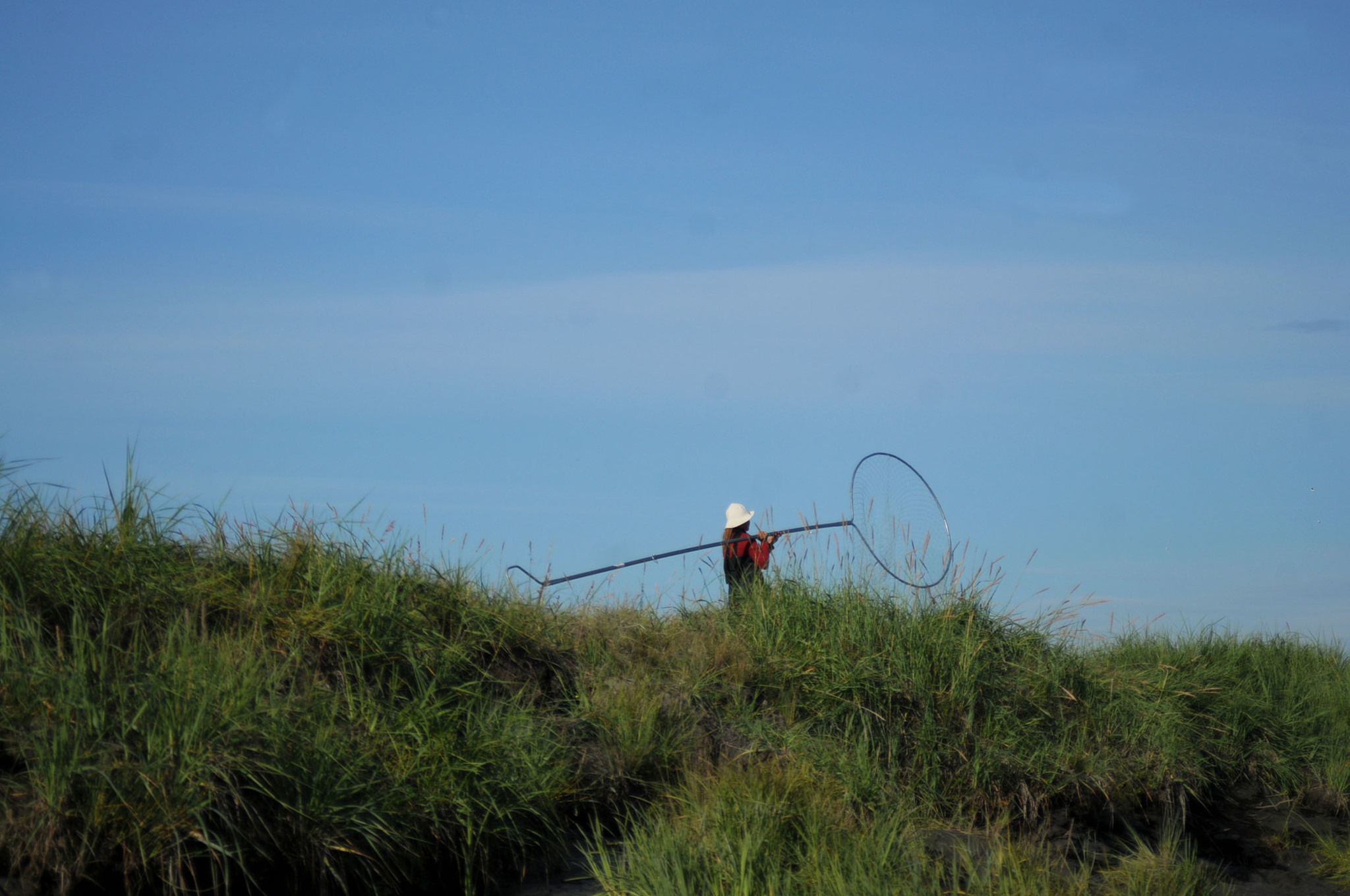The citizen advisory board for the Kenai River Special Management Area wants to see an end date set on the Alaska Department of Fish and Game’s request to close part of the lower river to dipnetting from shore.
Fish and Game submitted a proposal to the Board of Fisheries for its Upper Cook Inlet meeting, set for Feb. 26 through March 8 in Anchorage, asking the board to close the banks of the Kenai River between No Name Creek and the Warren Ames Bridge to dipnetting from shore.
Each year, thousands of Alaskans crowd to the lower Kenai River to fish for sockeye salmon in the personal use dipnet fishery, the most popular in the state. The state issued 31,216 personal use fishing permits in 2016, only 7,556 of which did not report fishing, according to effort and harvest data from Fish and Game. The Kenai River by far is the largest fishery, with sockeye comprising the vast majority of the harvested.
In 2016, however, fishing was slow. Dipnetters on the Kenai harvested 271,524 fish, only about half of the all-time high of 548,583 fish in 2011 and significantly down from the 386,853 they harvested in 2015, according to Fish and Game’s harvest numbers.
Anglers, who fished a total of 30,745 days in 2016, spread out along the banks of the Kenai from the beaches to the Warren Ames Bridge on the Kenai River Flats, both from the shore and from boats. In recent years, the damage to the banks on that section of the Kenai River have become a source of concern to Fish and Game and to the Alaska Department of Natural Resources’ Division of Parks and Outdoor Recreation, which manages the Kenai River Special Management Area.
Fish and Game’s proposals states that participation has increased to the point where the parking lot on the Kenai River Flats by the Warren Ames Bridge is regularly over capacity and people park along Bridge Access Road to access the river.
“Participation in the shore-based personal use fishery n the area just downstream of the Warren Ames Bridge has increased,” Fish and Game’s proposal states. “…Impact to the vegetated tide lands has not been assessed; however, it is evident that dip net fishing from the vegetated tide lands downstream of the Warren Ames Bridge may be negatively impacting the riparian habitat in the lower Kenai River.”
If the Board of Fisheries approves Fish and Game’s proposal, both banks would close to shore access, leaving only the north and south Kenai beaches for shore-based dipnet fishing. If nothing else changes — there are a number of proposals before the board dealing with Kenai River dipnet regulations — then the area will still be open for boats.
At its Thursday meeting, the Kenai River Special Management Area Advisory Board adopted a resolution asking Fish and Game and the Division of Parks and Outdoor Recreation to consider setting a sunset clause on the bank closure. The Division of Parks and Outdoor Recreation has received funding from the Exxon Valdez Oil Spill Trustee Council to do bank restoration work in that area, as reported by the Clarion. The regulation would not block the bank restoration project.
“I think this is an example where the agencies have recognized that there’s been some damage occurring here,” said Jack Blackwell, the superintendent for the Division of Parks and Outdoor Recreation for Kenai and Prince William Sound, to the board. “…Don’t think there hasn’t been communication between state parks and Fish and Game. There has been a lot of discussion.”
If the resolution passes, it would set a monetary barrier to access for dipnet fishermen without a boat — both Kenai beaches are regulated by the City of Kenai, which charges a daily parking fee, camping fees and entrance fee. Access at the bridge is free. That was one reason the Kenai/Soldotna Fish and Game Advisory Committee did not vote to support the proposal, said Andrew Carmichael, a member of the advisory committee and a member of the Kenai River Special Management Area Board, at the board’s meeting. Carmichael was the only one who voted against the resolution.
“When you have an economic group of people that no longer can access the fishery unless they pay $40 a day or launch a boat at Centennial (Park in Soldotna) for $20 … that’s the most disconcerting aspect of it,” he said. “…We should consider the fact that this is an economic group where possibly the fish actually mean something to the people.”
The Board of Fisheries will take up the proposal at its meeting in Anchorage.
Reach Elizabeth Earl at eliabeth.earl@peninsulaclarion.com.

